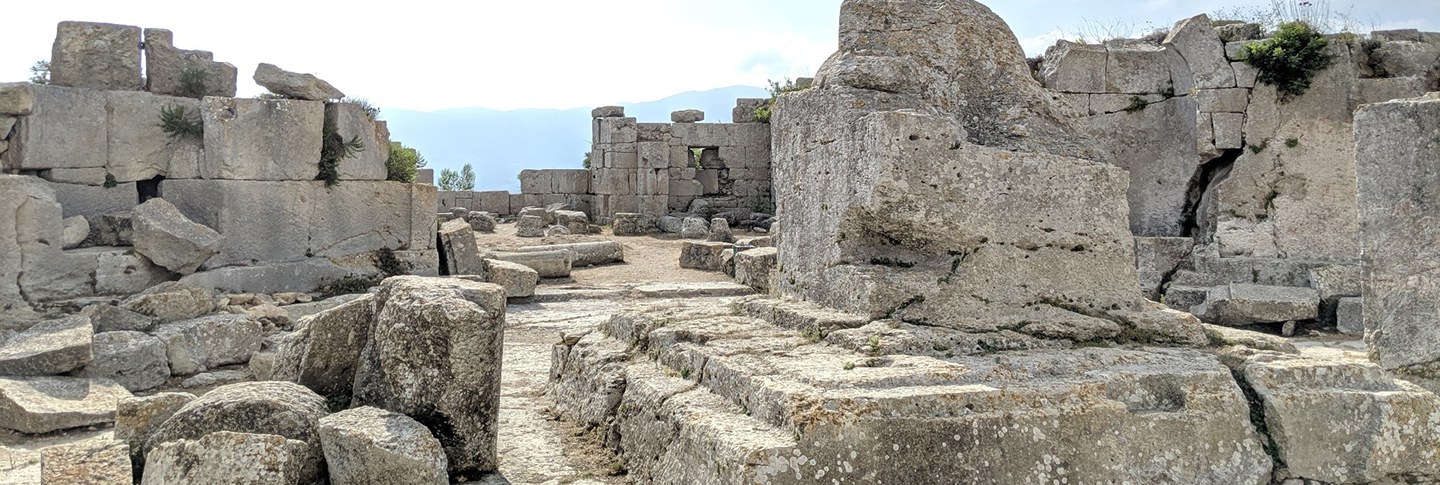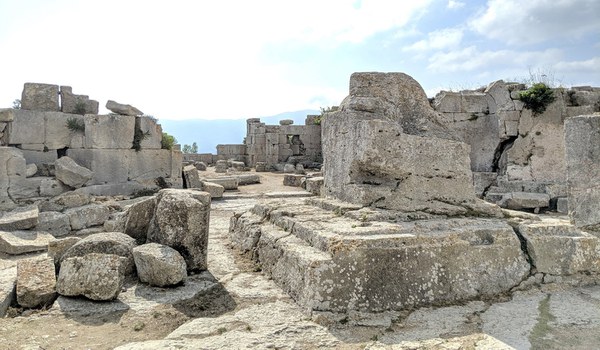Joe Glynias, PhD candidate in history at Princeton University, is a junior fellow in Byzantine Studies. He will be a junior fellow in the Harvard Society of Fellows starting this fall (2022–2025). His research report, “Nikon of the Black Mountain and the Standardization of Melkite Monastic Practice,” examined the writings and legacy of Nikon of the Black Mountain in eleventh-century Antioch amid broader Greek and Arabic exchange.
Q&A with Joe Glynias
Who was Nikon and what was his significance?
Nikon was from Constantinople and moved to Antioch in the 1050s, where he became a prominent monk in a region called the Black Mountain, charged by the patriarchate with teaching and advocating for imperial Byzantine ideas of Christianity. He’s a fascinating figure who provides context for the monastic efflorescence in eleventh-century Antioch.
We have three major written works by Nikon. One is a florilegium, that is, a compilation of a bunch of different source materials arranged by topic, called the Pandektes; another is the Taktikon, which is mostly a letter collection but also includes some other documents he thought were important. Finally, we have The Little Book, which is a treatise about various issues related to monastic practice that were important to Nikon in the late 1080s. The Taktikon is the richest of these for social and cultural history and is among the most important sources for Black Mountain monasticism in the late eleventh century.
How do Nikon’s writings contribute to the formation of a so-called monastic patristic canon?
A lot of my dissertation is concerned with the idea of textual canonization that happened in Constantinople in the tenth and eleventh centuries and the transferal of this particular ethos of standardizing textual corpora to Antioch. Nikon had a preferred group of monastic and patristic sources that he deemed most important and most useful—which largely track with what was regarded as such in Constantinople at the time. The Pandektes is his earliest work and brings together sources relating to canon law and Christian practice on sixty-three different topics. It stitches together quotations from various church fathers (patristic authors), demonstrating how Nikon wanted Christians to use these hallowed sources. The Pandektes is aimed at everybody—bishops, monks, laity—because it’s supposed to give a comprehensive idea of what behaviors were appropriate for Christians in a wide range of situations.
The Little Book uses the same monastic and patristic sources as evidence for its arguments rather than just laying quotations next to each other. In one part, Nikon questions the utility of “outside knowledge,” which was a big issue in Christianity and Byzantium writ large: what were Christians to do with pagan, non-Christian, or heretical knowledge that was useful in some way? This is especially relevant to my research because many people in eleventh-century Antioch were reading texts written by Muslins or non-Greek Orthodox Christians in Arabic, in addition to ancient sources either in Greek or in Arabic translation. Nikon argues that most people ought to avoid these “outside” materials, except for those who were appropriately educated and prepared to not get trapped or fooled. He particularly saw “outside knowledge” as a dangerous distraction to monks.
The Taktikon is the most wide-ranging and eclectic of his works. It contains thirty-eight letters, mostly addressed to monks and other clerics in the region, and two typika, or foundation documents for monasteries, that Nikon wrote. The often-lengthy letters deal with particular issues of church discipline in response to inquiries Nikon received. They include rich stories of monks in the region that flesh out our understanding of monasticism in late eleventh-century Antioch. We don’t really have hagiography about eleventh-century Antioch. Nikon actually wrote about the lives of the monks of Antioch but was criticized for including both their virtues and their vices. He refused to omit their flaws, so he burned it instead.
What does this contribute to our understanding of the period?
Nikon illuminates this mostly lost world of Byzantine Antioch, which was an important center of multilingual monasticism in Byzantium and was well-connected to important figures in Constantinople. My dissertation is also trying to show the important role that Arabic-speaking Christians played in Byzantium and how, through them, Byzantium ended up exerting a ton of influence on scholarship and culture across the Middle East at this time. Byzantinists are well-aware that Byzantium influenced the wider Slavic world in and after the eleventh century but have not dedicated enough attention to the Byzantine legacy and connections with Christians in the Middle East. Nikon’s writings give context to this larger story of Antioch in the eleventh century, when Eastern Christians made it a scholarly nexus for contact between Greek and Arabic. As a result, Constantinopolitan ideas of Christian Orthodoxy and Orthopraxy would spread across the Arabic-speaking world, and Arabic scientific texts and ideas would be translated into Greek with large effects on the Byzantine world.
May Wang is postgraduate writing and reporting fellow. Photo courtesy of Joe Glynias, “Nikon of the Black Mountain and the Standardization of Melkite Monastic Practice.”

